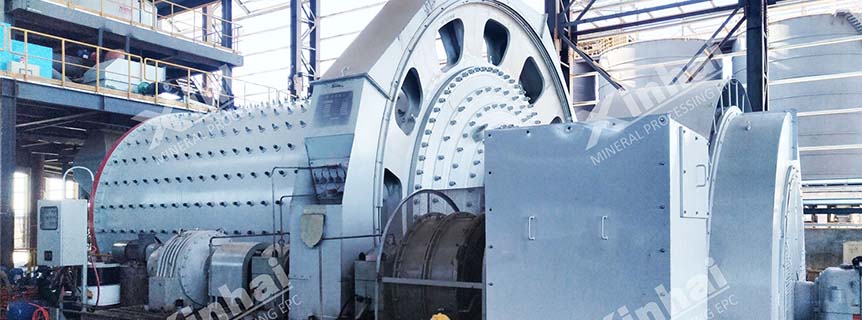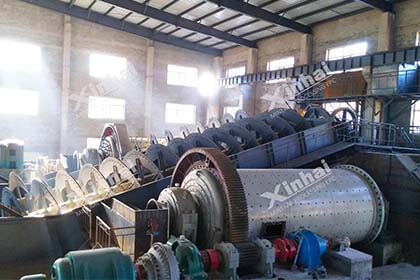Rod Mill VS Ball Mill: Which is Best for Your Project?
 Laura
Laura
 Oct 29, 2024
Oct 29, 2024
 774
774
If you want to know more details about equipment, solutions, etc, please click the button below for free consultation, or leave your requirements!

( Choosing a rod mill )
When it comes to mineral processing and manufacturing, the choice of milling equipment can significantly impact the efficiency and quality of the final product. Among the various types of milling equipment, rod mills and ball mills are two of the most commonly used. Both serve the purpose of grinding materials, yet they have distinct characteristics that make them suitable for different applications. In this blog post, we will dive deep into the differences between rod mills and ball mills, exploring their operational mechanisms, advantages, disadvantages, and ideal applications to help you determine which one is best for your project.
01Understanding the Basics
Back1. What is a Rod Mill?
A rod mill is a type of grinding mill that uses long rods for grinding media. The rods are typically made of steel and are placed in a rotating cylinder. The primary function of a rod mill is to crush material into a fine powder, but its design allows for a different grinding mechanism compared to other mills. The rods are arranged parallel to each other and are free to move within the mill, leading to a different grinding action than that of ball mills.
2. What is a Ball Mill?
A ball mill, on the other hand, is a cylindrical device that rotates around its axis and uses balls as the grinding media. The balls can be made of various materials, including steel, ceramic, or rubber. As the mill rotates, the balls are lifted and dropped, creating a tumbling action that grinds the material. Ball mills are widely used in various industries, including mining, cement, and chemical manufacturing.
02Operational Mechanisms
Back1. Grinding Mechanism in Rod Mills
Rod mills operate on the principle of attrition and compression. The long rods are designed to tumble within the mill, and as they do, they create a rolling motion that crushes the material. The grinding action is primarily due to the friction between the rods and the material being processed. This mechanism allows for a more uniform particle size distribution, as the rods help to break down larger particles into smaller ones without over-grinding.
2. Grinding Mechanism in Ball Mills
In contrast, ball mills utilize impact and attrition. The balls are lifted to a certain height and then fall onto the material, creating a significant impact force that breaks down the particles. This tumbling action can lead to a more aggressive grinding process, which can sometimes result in over-grinding and the production of fine particles. The grinding efficiency of a ball mill can be influenced by factors such as the size of the balls, the speed of rotation, and the type of material being processed.
03Key Differences Between Rod Mills and Ball Mills
Back1. Grinding Media
One of the most noticeable differences between rod mills and ball mills is the type of grinding media used. Rod mills utilize long rods, while ball mills use spherical balls. This difference in shape affects the grinding action and the resulting particle size distribution. Rod mills tend to produce a coarser product, while ball mills can achieve finer particle sizes.
2. Particle Size Distribution
As mentioned earlier, rod mills typically produce a more uniform particle size distribution, which can be advantageous for certain applications. Ball mills, on the other hand, can create a wider range of particle sizes, which may be desirable in some cases, but can also lead to over-grinding.
3. Efficiency and Energy Consumption
Rod mills generally have a lower energy consumption compared to ball mills when processing the same material. This is due to the more efficient grinding action of the rods. However, ball mills can be more efficient for certain applications, especially when a finer product is required.
4. Application Suitability
Rod mills are often used in applications where a coarser product is acceptable or preferred. They are commonly employed in the grinding of ores, coal, and other materials in the mining industry. Ball mills, on the other hand, are more versatile and can be used for a broader range of applications, including cement production, chemical processing, and the manufacture of pigments and ceramics.
04Advantages and Disadvantages
Back1. Advantages of Rod Mills
1). **Coarse Grinding**: Rod mills are ideal for grinding materials that require a coarser product, making them suitable for primary grinding applications.
2). **Uniform Particle Size**: The grinding action of the rods results in a more uniform particle size distribution, which can be beneficial in various applications.
3). **Lower Energy Consumption**: Rod mills typically consume less energy compared to ball mills, making them a more cost-effective option for certain projects.
4). **Less Over-Grinding**: The design of rod mills minimizes the risk of over-grinding, which can lead to the production of unwanted fine particles.
2. Disadvantages of Rod Mills
1). **Limited Versatility**: Rod mills are not as versatile as ball mills and may not be suitable for all applications.
2). **Lower Capacity**: Rod mills generally have a lower throughput compared to ball mills, which can be a limiting factor for larger projects.
3). **Higher Initial Cost**: The initial investment for rod mills can be higher than that of ball mills, which may deter some project managers.
3. Advantages of Ball Mills
1). **Versatility**: Ball mills can be used for a wide range of applications, including both dry and wet grinding processes.
2). **Finer Particle Size**: Ball mills are capable of producing finer particle sizes, making them suitable for industries that require high-quality powders.
3). **Higher Capacity**: Ball mills generally have a higher throughput compared to rod mills, which can be advantageous for large-scale projects.
4). **Adaptability**: The design of ball mills allows for easy adjustment of parameters such as rotation speed and ball size, enabling customization for specific projects.
4. Disadvantages of Ball Mills
1). **Higher Energy Consumption**: Ball mills tend to consume more energy, which can increase operational costs.
2). **Over-Grinding Risk**: The aggressive grinding action of ball mills can lead to over-grinding and the production of unwanted fine particles.
3). **Less Uniform Particle Size**: The particle size distribution produced by ball mills can be less uniform compared to that of rod mills.
05Choosing the Right Mill for Your Project
BackWhen deciding between a rod mill and a ball mill for your project, it is essential to consider several factors:
1. Material Characteristics
The type of material you are processing plays a significant role in determining the appropriate milling equipment. If your material requires a coarser grind, a rod mill may be the better choice. For materials that need to be finely ground, a ball mill would be more suitable.
2. Desired Particle Size
Consider the desired particle size distribution for your final product. If uniformity is critical, a rod mill might be preferable. However, if a range of particle sizes is acceptable, a ball mill could be the right option.
3. Energy Efficiency
Evaluate the energy requirements for each type of mill. If energy consumption is a primary concern for your project, a rod mill may offer a more cost-effective solution.
4. Project Scale
Consider the scale of your project. For large-scale operations requiring high throughput, a ball mill might be more appropriate. For smaller projects or pilot studies, a rod mill could suffice.
5. Budget Constraints
Finally, assess your budget. While rod mills may have a higher initial cost, their energy efficiency could lead to long-term savings. Conversely, ball mills may have a lower upfront cost but higher operational expenses.
06Conclusion
BackIn conclusion, both rod mills and ball mills have their unique advantages and disadvantages, making them suitable for different applications and project requirements. Understanding the fundamental differences between these two types of milling equipment is crucial for making an informed decision.
If your project requires coarse grinding, uniform particle size distribution, and lower energy consumption, a rod mill may be the best choice. On the other hand, if you need versatility, finer particle sizes, and higher capacity, a ball mill might be the way to go.
Ultimately, the decision should be based on a thorough analysis of your specific project needs, material characteristics, and budget constraints. By carefully considering these factors, you can select the milling equipment that will best serve your objectives and contribute to the success of your project.
Contact us and learn more about Rod Mills.
 +86 18716000713
+86 18716000713 xlyin@xinhaimining.net
xlyin@xinhaimining.net




 Message
Message Chat Now
Chat Now

















